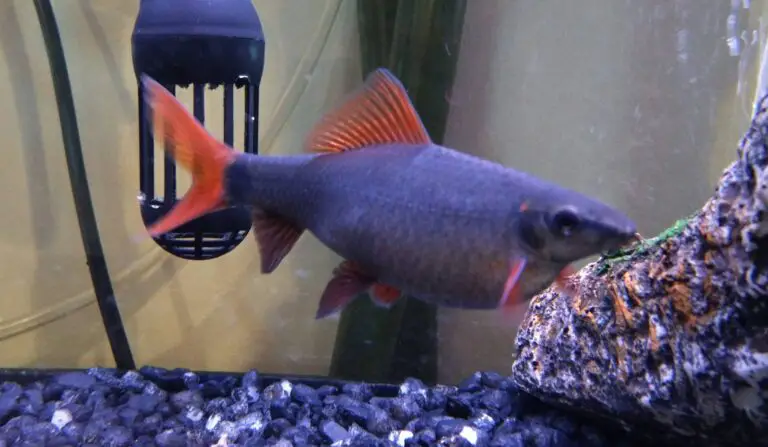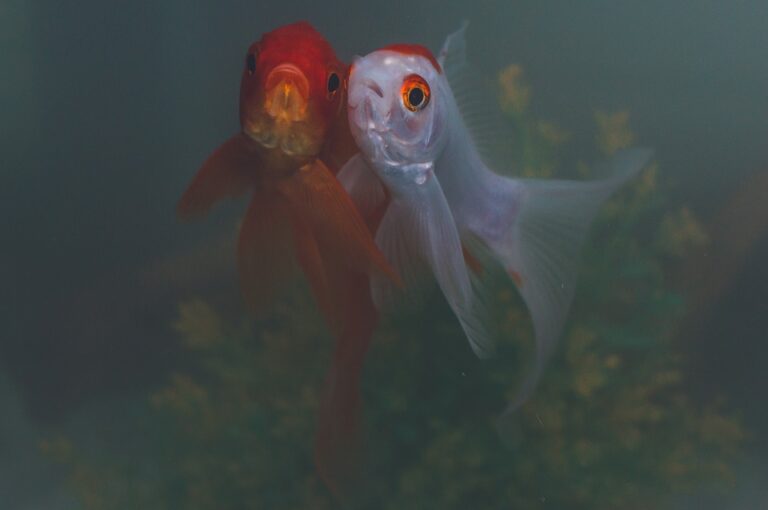How to Use Methylene Blue for Fish?
Methylene blue is a common fish medication used to treat various bacterial and fungal infections. It can also be used as a prophylactic treatment for stress relief in fish, and to help prevent the spread of disease between aquarium inhabitants. To use methylene blue, begin by performing a water change in the tank before adding it to the water.
The recommended dose is 1 teaspoon per 10 gallons of aquarium water. Make sure that all filters are running during treatment, and do not add any other medications or chemicals at this time. After adding the methylene blue, maintain good aeration with an air bubble stone or pump throughout treatment.
Leave the filter running for 12-24 hours after dosing with methylene blue then perform another 25-50% water change before reintroducing other treatments if needed. For best results it’s important to follow up with regular maintenance on your tank including frequent partial water changes, testing your parameters regularly and keeping on top of cleaning out detritus from the substrate.
- Prepare a solution of methylene blue: Mix 1 teaspoon of methylene blue into 5 gallons (22 liters) of water to create an appropriate dose for treating fish disease. Make sure the water temperature is close to that in your aquarium, as this will help reduce stress on the fish during treatment.
- Remove carbon from your filter: Carbon will absorb any medication added to the tank and render it ineffective, so you must remove it prior to adding any treatments like methylene blue. This can be done by physically removing the carbon or bypassing it if possible with an external canister filter system.
- Add your prepared solution to the tank: With carbon removed, you can now safely add your prepared solution of methylene blue directly into the aquarium at one time or gradually over a period of several hours depending on how large and well-aerated your aquarium. If you are treating a small tank then adding all at once should suffice as long as there is sufficient aeration/circulation present in order for oxygen levels not to drop too low during treatment periods.
- Monitor parameters regularly: As with most medications used in aquaria, regular monitoring of parameters such as pH, ammonia and nitrite should be undertaken while using Methylene Blue; this will alert you if anything unusual happens which may require further action or dosing adjustments.
- Make sure all plants are out before treatment: Before starting any course of medication containing Methylene Blue make sure that all live plants have been removed from within the aquatic environment; some species may not survive being exposed to high concentrations due their sensitivity level towards certain chemicals found within these medications.

Credit: www.amazon.com
Can I Put Methylene Blue in a Tank With Fish?
Methylene blue can be an effective treatment for certain diseases and parasites that affect fish in aquariums. However, it is important to use caution when adding this chemical to a tank with live fish. Methylene blue should only be used in tanks with healthy fish as it can cause some stress or even death if the fish are already sick or weak.
The dosage must also be very specific; too little will not treat the illness and too much could poison your tank inhabitants. It is best to consult with a veterinarian or other aquatic specialist before using methylene blue on your aquarium’s occupants.
Furthermore, methylene blue should never be combined with any other medications and always needs to be added slowly into the water until the desired concentration has been achieved.
After administering medication, test levels of ammonia, nitrite, and nitrate so you can adjust accordingly if necessary; monitoring these levels during treatment is essential for ensuring safety of both you and your pet-fish!
How Do You Apply Methylene Blue?
Methylene blue is a widely used compound in the medical field. It has been utilized for more than a century as an antiseptic, anti-fungal agent, and dye to detect tissue damage. In recent years its therapeutic potential has expanded and it is now being used for many different applications.
The most common application of methylene blue is as an intravenous injection into the bloodstream which can help treat serious infections such as sepsis or malaria.
Additionally, it can be applied topically to wounds to reduce infection and improve healing time while also providing pain relief due to its anti-inflammatory properties. Methylene blue may also be injected directly into tumors or cysts that cannot be removed surgically in order to shrink them down so they are easier to remove during surgery or dissipate over time on their own.
Finally, methylene blue has been studied extensively for use in treating neuropathic pain conditions by injecting it directly into affected nerves or using transdermal patches that slowly release the medication through the skin over time. Each method of application will have different dosing requirements based on individual need so it’s important to consult with your doctor before attempting any at home treatments with methylene blue.
How Long to Quarantine Fish With Methylene Blue?
Quarantine is an important step for any aquarist before introducing new fish into their aquarium. Quarantining new fish can help prevent the spread of disease and mortality among existing fish. One of the most common methods to quarantine new fish is a process called “dipping” or treating with methylene blue.
This method involves submerging the newly-introduced fish in a bath of diluted methylene blue solution to kill off any parasites or pathogens that may be present on its body, fins, and gills. The exact amount of time required for dipping will depend on both the type of parasite being treated and the concentration of methylene blue used in the dip. Generally speaking, however, it’s recommended to keep all species in a dip for anywhere between 10 minutes and one hour depending on what works best for your particular situation.
It’s important to note that longer dips are not necessarily more effective than shorter ones; rather, it’s about finding what works best for your specific needs based on trial-and-error testing with different amounts of time and concentrations over multiple treatments if needed. Following up with regular water changes after treatment can also help maintain good health among quarantined specimens as well as those already living in your tank!
HOW TO USE METHYLENE BLUE FOR FISH TREATMENT (RPL Aquatics)?
How to Use Methylene Blue for Betta Fish?
Methylene blue is a chemical compound commonly used to treat bacterial and fungal infections in Betta fish. It can be added directly to the water of an infected fish tank or mixed with food if possible. Methylene blue works by inhibiting the growth of bacteria, fungi, and parasites that may otherwise cause disease in your Betta fish.
Make sure you follow instructions carefully when using this product as it can be toxic to other aquatic life forms such as snails, shrimps, fry, plants, and corals.
Does Methylene Blue Kill Parasites in Fish?
Methylene blue is an effective treatment for killing parasites in fish. It works by disrupting the cell metabolism and respiration of the parasites, ultimately leading to their death. Additionally, methylene blue also helps reduce stress on your fish since it can be used as a de-stressing agent when added to aquarium water.
To use this method effectively, simply add 1 teaspoon per 10 gallons of water every other day until you notice that the infestation has been eliminated or reduced significantly.
How Long to Keep Fish in Methylene Blue?
Methylene blue is a common aquarium treatment used to help heal injured or diseased fish. Generally, it is recommended to keep the affected fish in a bath of methylene blue for about 15 minutes at a time and no more than three times per day, with at least four hours between baths. It’s important not to overdo it as too much exposure can cause stress on the fish and be toxic.
Can I Put Methylene Blue in Aquarium With Fish?
Methylene blue is a chemical compound commonly used in aquariums for its antibacterial, antifungal, and antiviral properties. Although it can be effective at treating certain illnesses in fish, it should not be added to an aquarium with any living fish present. Methylene blue is toxic to many aquatic species and can quickly build up to dangerous levels in the water over time if not properly monitored.
Therefore, if you intend on using methylene blue as part of your tank maintenance routine, make sure all the fish have been removed first before adding this chemical into the aquarium.
Methylene Blue for Fish Ich
Methylene blue is a commonly used treatment for Fish Ich, a highly contagious fish disease caused by parasites. It works as an antiparasitic and antiseptic to eliminate the ich parasites from the water and provide relief for infected fish. Methylene blue is effective in eradicating Ich, but it must be administered correctly to ensure success; otherwise, it can cause harm to your aquarium’s inhabitants.
Methylene Blue Overdose Fish
Methylene blue is a common medication used to treat fish with ailments such as fungal infections, parasitic infestations, and even certain types of bacterial diseases. An overdose of methylene blue can be deadly for fish; symptoms may include loss of appetite, gasping at the surface, erratic swimming behaviour or rapid gill movement. It is important to consult an experienced aquarist before administering any medications to your tank inhabitants and always follow the directions provided on the packaging carefully.
Methylene Blue for Fish Dosage
Methylene blue is a safe and effective medication used to treat fungus and parasites in fish. It is important to follow the directions carefully when administering this medication, as improper dosages could harm or even kill your fish. The recommended dosage for methylene blue is 1 drop per gallon of water every 24 hours for up to three days.
Be sure to remove carbon filters from aquariums before using this product, and be aware that it will tint the water blue until completely filtered out.
Can I Use Methylene Blue for Betta Fish?
Methylene blue is an effective, safe treatment for betta fish as it helps to treat a wide range of diseases and parasites. It also has antibacterial and antifungal properties, making it useful for treating infections in both fresh and saltwater environments. In addition, methylene blue can be used to reduce stress in bettas by increasing oxygen levels in the water.
As with any medication, however, it’s important to follow instructions carefully when administering methylene blue to your betta fish.
Conclusion
This blog post has provided a comprehensive overview of how to use methylene blue for fish. It has described the positive effects it can have on fish health, as well as the precautions that must be taken to ensure its safe and effective use. Methylene blue is an effective way to treat various ailments in aquarium fish, but it should only be used after careful consideration and with appropriate cautionary measures in place.
With these tips in mind, you are now better equipped to utilize this valuable tool safely and effectively for your fish’s benefit.





